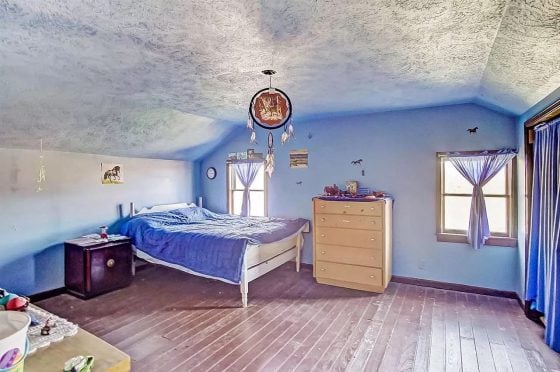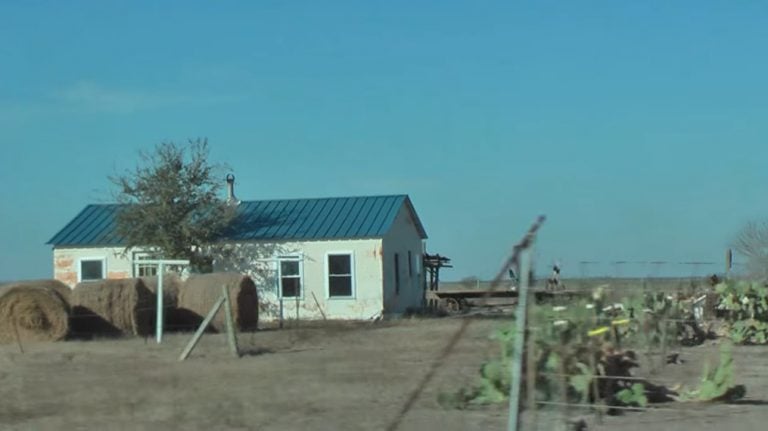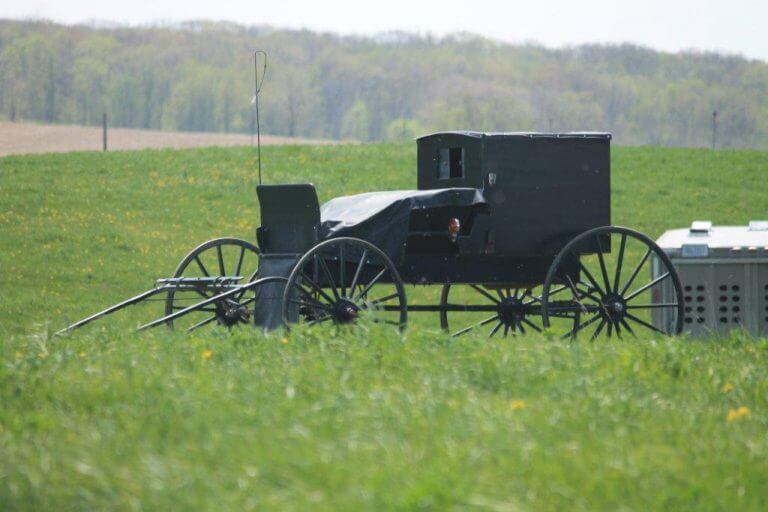Union Grove and Yanceyville, NC Amish settlements
North Carolina is my home state, and not one known for having a large Amish population. Amish have attempted to settle NC in the past, however, and today one settlement does exist, at Union Grove, a hamlet lying some miles west of Winston-Salem.
Union Grove, which began in 1985 as a spinoff of the Guthrie, Kentucky community, is considered a New Order settlement. Like its mother community (but unlike the vast majority of horse-and-buggy Amish), Union Grove allows the use of public grid electricity. For that matter, about 1/3 of the 50 or so New Order congregations are considered “electric”, with the remainder staying off the grid, including the two dozen New Order churches of Holmes County, Ohio.
An Amish commentator describing the move from Kentucky to NC explains that “it seemed many local people had gone to Pennsylvania to ‘Amish Country’, and were quite enthused about Amish moving into the area.” He goes on to describe the warm welcome offered by locals happy at the prospect of Plain neighbors–apparently a common sentiment, as recent reportage about new Colorado and Maine Amish communities has suggested.
Today, a quarter-century later, Union Grove remains a single church district in size. But a decade after the settlement’s founding, families from Union Grove created the experimental, and now-defunct community of Yanceyville, NC.
The Yanceyville community, existing from 1994 to 2001, was a rather unique one. What set Yanceyville apart was the fact that it was a bilingual community, and one inclined to accommodate those wishing to join the Amish. In fact, it was started by six families from Union Grove described as having “a desire to help some of the many seeking families.”
And such was the case, as a number of individuals of non-Plain background ended up joining this community, and even comprised half the member families at one point. Preaching at Yanceyville was in English, dress was plain, and the horse and buggy was used. But apparently due to the influence of an outside church, this community soon ceased to exist as an Amish settlement, and was followed by a short-lived Beachy church.
For whatever reason, North Carolina has not proven as attractive a destination for Amish as states such as Wisconsin, Missouri, or Kentucky, all of which have seen numerous new settlements formed over the past two decades. Perhaps it has to do with climate, available land, or even building codes, which one Amish commentator notes are apparently stricter in NC when it comes to constructing new school buildings.
Historically, at least one other Amish settlement has existed in North Carolina, however, in the vicinity of the Dismal Swamp in the northeastern corner of the state. Read more about that settlement and other North Carolina Amish communities in the Amish State Guide, or more on NC Amish furniture.
(Sources: New Order Amish Church Directory 1999 and 2004; G.C. Waldrep, “The New Order Amish and Para-Amish Groups: Spiritual Renewal Within a Tradition”, Mennonite Quarterly Review July 2008)






does anyone know of any rent to own “plain homes” in this area? My husband and I would like to re-locate.
LOOKING FOR A AMISH TO BREAK A HORSE TO DRIVE
I AM LOOKING FOR A AMISH TO BREAK A 4 YEAR OLD TENN. WALKING HORSE TO PULL A DR. BUGGY . I HAVE RODE HIM SEVERAL TIMES . BUIT I HAVE A GRANDSON THAT HIS HANDICAP AND I NEED TO HAVE HIM RIDE IN A BUGGY WITH ME SO HE CAN ENJOY THE THINGS WE ENJOY. SINCE MY GRANDSON IS HANDICAP I NEED THE HORSE BROKE TO BE QUITE AND NOT RUN AWAY THE BUGGY WHILE RIDING THE GRANDSON. AND I KNOW THE AMISH IS VERY GOOD WITH WORKING WITH HORSES. I LIVE IN THE DENVER AREA. MY E-MAIL IS ralphdenton@att.net phone is 704-235-7913
ANY HELP YOU CAN SUPPLY WITH BE A BIG HELP ON FINDING SOMEONE TO WORK WITH MY HORSE FOR US.
MY MAILING ADDRESS IS
RALPH DENTON ,
6361 SHERWOOD LN.
DENVER, NC. 28037
families
anyone no of a family willing to take in an outsider/non plain?
Would like to bring grandchildren to Union Grove for tour
Now that school is out for the summer in our community. I’m interested in taking our grandchildren to communities in NC to see other cultures and lifestyles. Would it be possible for someone to take us on a tour or your community? Is there a fee and what date, day and time would be a convenient time to visit?
Kettle cooker
I am looking for An Amish welder interested in Some work. I will pay them to build me a kettle corn machine. Please contact m via email or by phone at 704 989-3206 if you are interested. I have an older kettle corn machine built by the Amish which can be used as a guide.
About the church building….Union Grove follows in the line of Somerset County historically (they also use a hymnbook other than the Ausbund). I may not have the sequence just right, but Union Grove comes from Guthrie, KY which came out of either Stuarts Draft, VA or Virginia Beach, VA (both now Beachy churches). Those churches descended from Somerset Amish ….so now you have the connection! 🙂 I.m a native of the Tarheel state used to attend the Union Grove Amish church and love those people!
Looking for an Amish Woman...dear friend of the family
Hello,
My name is Kathy Ellison Frankenfield and I am a daughter of Lillian Ellison of Burlington, NC. I am searching for a dear, sweet Amish woman in the area by the name of Dee Fogleman. She is a friend of my mother’s. I need to reach her to let her know that my father, Carl Ellison, passed away on December 14, 2013. My mother wants very much to talk to Mrs. Fogelman. Would it be possible, if you know Dee Fogleman (a woman in her 60’s) to ask if she knows Lillian Ellison of Burlington, NC? If so, I would like to speak with her. She could write to me at 20040 Apple Ridge Lane, Spring Hill, KS 66083. Or if you are able to provide her contact information, I could call or write to her if you could email me her information. Thank you if you can help me with this very important matter. Sincerely, Kathy Ellison Frankenfield
Kathy, are you sure she is an Amish person? The Yanceyville community in particular had quite a number of converts, but I’ve never come across the last name Fogleman among the Amish. I hope you can locate her.
Erik,
I have passed this contact info along to Mrs. Fogelman, who said she would contact Kathy. They are members at Caswell Mennonite.
Forest
Thanks Forest, should have suggested such to Kathy, but thought it might be a related church. Love to see all the helping hands here!
location
I plan on visiting Union Grove. Is there a restaurant that the serves Amish food, or that is run by Amish? I heard some od the stores are hard to find, could you name of stores and location. thank you, Betty Baker
Do a search for “Shiloh General Store, Hamptonville, NC” You can also see comments on Tripadvisor.com about it.
I have an old horse drawn wagon that I am looking for an Amish person to restore the frame work on the wagon excluding axels. Have good wheels on Wagon just need the frame work re- done
old wagon work
I am looking for an Amish person to restore the frame work on old horse drawn wagon excluding the axle. Axle is good and wheels are good.
I am looking for an Amish person to restore the frame work on old horse drawn wagon excluding the axle. Axle is good and wheels are good.
I own a old Amish Carriage circa 1850
Looking for new wheels
Building a pole barn
Im looking to build a large pole barn it is a farm so no permits needed have a camper to stay in on site while working on project if needed, Can contact Mike 919-213-1050 cell
Looking for someone to break a 3 year old to drive
I have a 3 yr old twh that is broke and gentle to handle but needs to be broke to drive. And also needs a change of mindset. Contact me at 3364016151